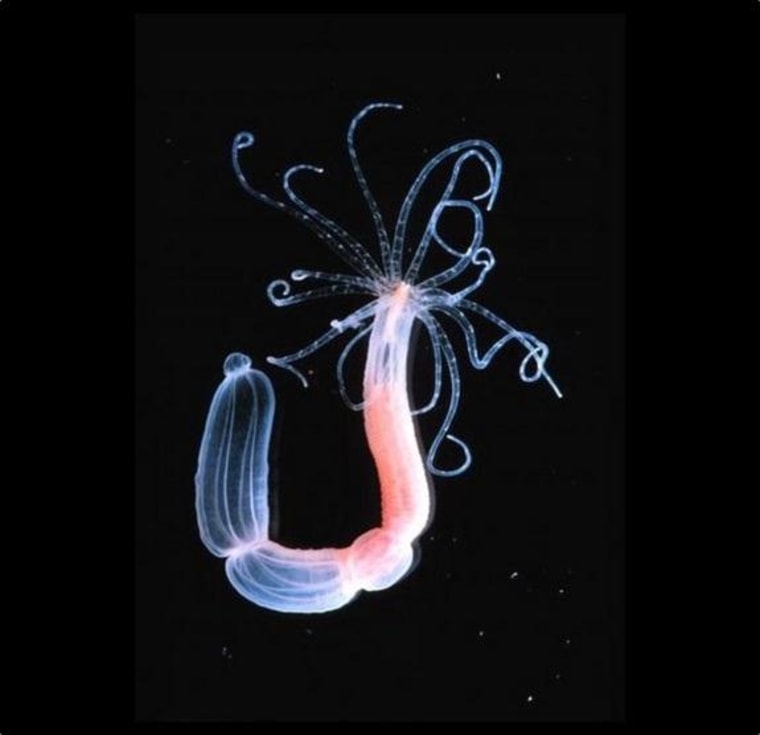Are Anemones Animals Or Plants
Sea Anemones Are Half-Plant, Half-Creature, Cistron Study Finds
The sea creature's genes look more like those of animals, but the regulatory code that determines whether those genes are expressed resembles that in plants.

/ Source : Live Science
The sea anemone is an oddball: half-found and half-animal, at least when it comes to its genetic code, new research suggests.
The sea beast's genes await more like those of animals, but the regulatory lawmaking that determines whether those genes are expressed resembles that in plants, according to a study published Tuesday (March 18) in the journal Genome Research.

What's more, the complicated network of gene interactions constitute in the simple sea anemone resembles that found in widely divergent, more complex animals.
"Since the body of water anemone shows a complex mural of gene regulatory elements like to the fruit fly or other model animals, we believe that this principle of complex gene regulation was already nowadays in the common antecedent of human, fly and sea anemone some 600 million years ago," Michaela Schwaiger, a researcher at the University of Vienna, said in a argument. [See Stunning Photos of Glowing Sea Creatures]
A unproblematic plan
The size of an organism'southward genome doesn't correspond to how uncomplicated or circuitous that creature's body is, so some scientists hypothesized that more than complicated links and networks between genes made for more sophisticated body plans.
Schwaiger and her colleagues at the University of Vienna analyzed the genome of the sea anemone, not merely identifying genes that code for proteins, but besides assessing snippets of code known equally promoters and enhancers, which help turn the book upwardly or downwards on gene expression.
The squad found the sea anemone'due south uncomplicated anatomy hides a complicated network of gene interactions, similar to those plant in higher animals such as fruit flies and humans. That belies the notion that more than circuitous gene networks always correlate with more than elaborate body plans, and likewise suggests the evolution of this level of cistron regulation happened before body of water anemones, fruit flies and humans diverged, about 600 meg years ago.
—Tia Ghose. Alive Science
Follow Tia Ghose on Twitter and Google+. Follow Live Scientific discipline on Twitter, Facebook & Google+. This is a condensed version of a written report from LiveScience. Read the full written report.
- Marine Marvels: Spectacular Photos of Sea Creatures
- Unraveling the Homo Genome: half dozen Molecular Milestones
- Gallery of Glowing Sea Creatures
Copyright 2014 LiveScience, a TechMediaNetwork company. All rights reserved. This cloth may non exist published, broadcast, rewritten or redistributed.
Are Anemones Animals Or Plants,
Source: https://www.nbcnews.com/science/science-news/sea-anemones-are-half-plant-half-animal-gene-study-finds-n59076
Posted by: williamsthoom1977.blogspot.com


0 Response to "Are Anemones Animals Or Plants"
Post a Comment